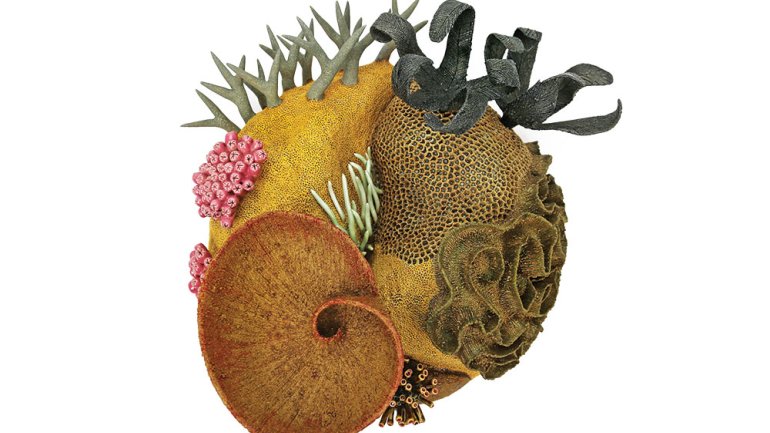Hope Spot
Hope Spot
If you’re not an oceanographer, a scuba diver, or someone with a voracious appetite for environmental news, the Coral Triangle might not ring any bells. But it’s special – very special. The 2.3 million-square-mile region in the Indo-Pacific boasts such biodiversity – including more species of coral than anywhere else in the world – that it’s been called “the Amazon rainforest of the ocean.”
Ceramist and ocean advocate Courtney Mattison knows that well. She’s been exploring marine biology and art in tandem since her undergraduate days at Skidmore College in the mid-2000s. And after learning that one of her heroes, oceanographer Sylvia Earle, had identified 50-plus “hope spots” – regions, including the Coral Triangle, that must be protected to safeguard the health of the ocean – Mattison decided in 2011 to start a series of sculptural works to acknowledge each site on the growing list.
Her advocacy effort is not aimed at shaming people into caring about the effects of climate change on marine ecosystems and the communities that depend on them. Instead, Mattison, 30, hopes to inspire viewers to look more deeply into an issue that, all too often, feels murky and abstract.
That approach has made some pretty big waves. Last year, Origin magazine named the Denver artist one of its International SeaKeepers Society named her Artist of the Year.
Her installations and sculptures, such as Coral Triangle II, have been exhibited in venues as diverse as the Virginia Museum of Contemporary Art (on view through April 17) and the National Oceanic and Atmospheric Administration.
It’s easy to understand why the work holds such broad appeal. “Art can spark a sense of curiosity,” says Mattison, “that scientific data often can’t.”

